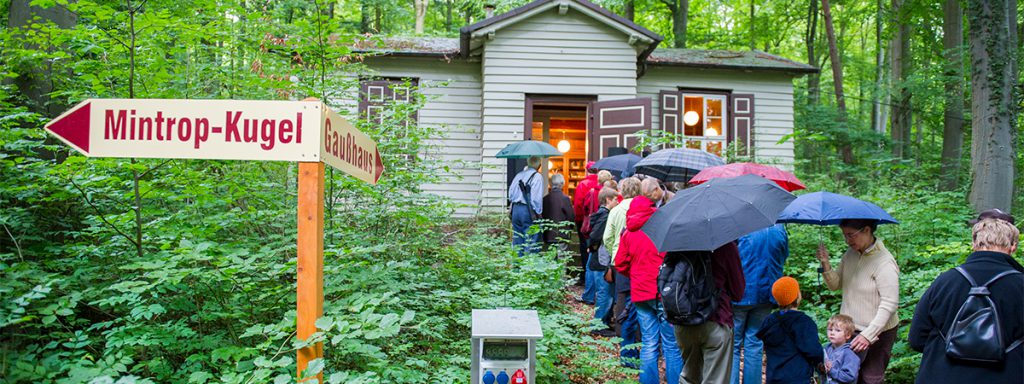
The Gauß house
Here Carl Friedrich Gauß researched geomagnetism.
Historical Earthquake Station | Gauß house and earth magnetism
Magnetosphere, space weather, polar lights
Today we know that the so-called solar wind (charged particles that are constantly flowing from the sun into space) compresses the earth’s magnetic field on the front, sun-facing side and pulls it to a long tail on the back. This solar wind, which flows past the terrestrial magnetosphere, generates electrical currents that partially penetrate into the magnetosphere and cause the magnetic field changes already observed by Gauss and Weber on the ground. Its strength is characterized by the Kp values introduced at the Göttingen Institute in 1949 by Julius Bartels, a 3-hour measure of the magnetic effects of solar particle radiation (www.gfz-potsdam.de/kp-index). In so-called earth-magnetic storms, which are now predicted by satellites (space weather), auroras occur, which can be observed at Kp values greater than 6 even in Göttingen under favorable conditions (www.polarlicht-vorhersage.de).


